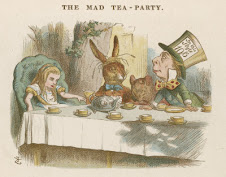Recent stories about media outlets and environmental organizations turning a blind eye to Green candidates Rich Whitney and Laura Wells inspired a piece at GreenChange.org entitled “How can we overcome the press blackout of Green candidates?” The piece has inspired a lively discussion with a lot of interesting ideas flying around, so come join the conversation on a topic close to our hearts here at Green Party Watch.In the Green Change article, Schwab sketches a two-pronged strategy to counter the media's duopolist bias:
The internet is constantly giving us inexpensive, increasingly effective ways of getting our message out without having to go through the traditional gatekeepers. Blogs, videos on youtube and vimeo, live streaming services, social media like twitter and facebook, and other technologies give Greens the opportunity to take their message directly to supporters, but for now, these opportunities have been severely underutilized. Plus, even a well-developed “Green media” would be more useful for engaging supporters than for reaching out to the general public.So aside from creating our own media, the second part of our strategy for breaking the press blackout (“greenout”?) should be organized pressure campaigns to get Greens included in press outlets, organizational voter guides (like the California League of Conservation Voters site), debates, and other media that can bring the Green message to a general public audience – which is ultimately what we need to succeed.
The conversation that follows in the comments there is worth perusing, and the topic should be of interest to anyone concerned with third party and independent media strategy. From the outset, a stickler might object to the presupposition that there is in fact a media "blackout" of the Green Party and Green Party candidates for office. The Green Party News Page at Third Party and Independent Daily, for instance, aggregates dozens of news and blog items every twenty-four hours. The press do not not report on the Green Party. But if there is no blackout per se, the lighting is nonetheless dim: there is clearly an institutional media bias against third party and independent candidates for office. At IPR, Ross Levin points out that this bias extends to polling organizations as well:
Even though Green Party candidate for governor Rich Whitney got over 10 percent of the vote in the 2006 gubernatorial race, for some reason Rasmussen has left him – and other third party candidates – out of a recently released poll. Still, without any third party candidate mentioned by name, the “other” category was chosen by six percent of voters.
Any campaign to pressure news and media organizations to cease excluding third party and independent political voices from our political discourse should also target polling organizations. Arguably, success on this score could prove doubly effective: the inclusion of third party and independent candidates in public opinion polls would likely lead to wider coverage of those campaigns in the political press.
Commenters at Green Change also point out that third party and independent campaigns are not without blame if they are marginalized by the press. In many instances, they do not have a media strategy adequate to their informational environment. Commenters suggested an invigoration and expansion of independent Green media networks, as well as greater outreach to and pressure on wider and more influential outlets, but they also noted that without significant output from the campaigns themselves, these networks cannot be put to good use. Thus, it was suggested that campaigns produce more press releases and short web videos, engage in social networking, hold press conferences or rallies etc. One might also consider the possibility of reaching out to other third party and independent groups and campaigns.
If, for instance, the Green and Libertarian candidates in a given race hold a press conference together, it would seem to be an inherently more newsworthy event than if each of them held press conferences on the very same subject independently of one another over a period of days. And there are automatically at least two possible political dynamics built into such a scenario, depending on whether the candidates agree or disagree on the issue at hand, i.e. the subject matter dealt with at the press conference, thus providing media with the opportunity to reproduce one of their two favorite narrative lines: "strange bedfellows" or the standard "he said/she said" style report.
Further suggestions for third party and independent media strategy?







No comments:
Post a Comment